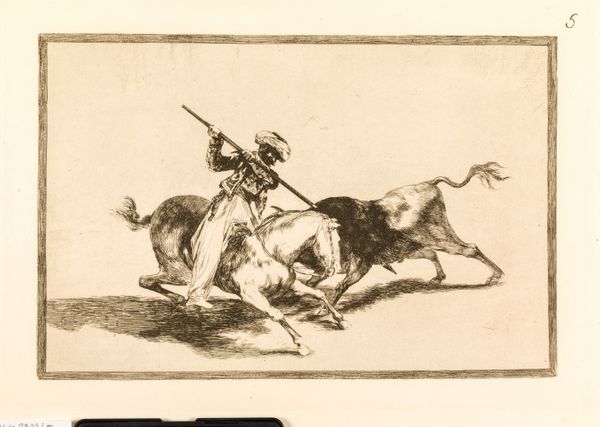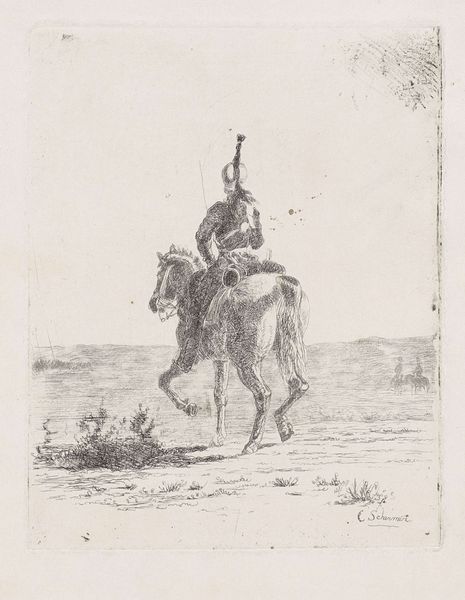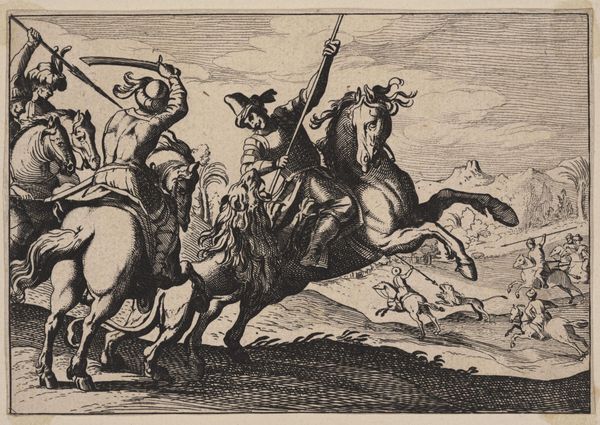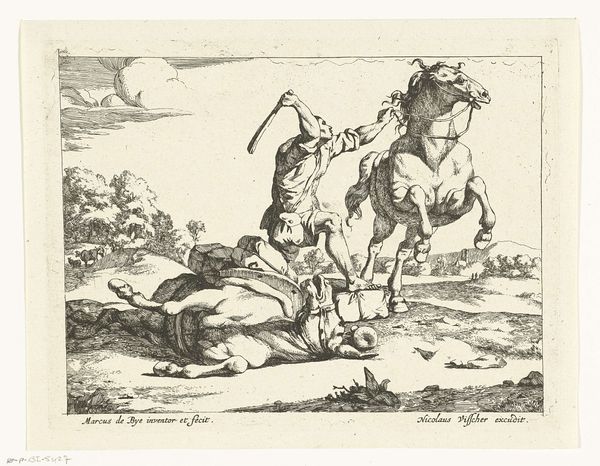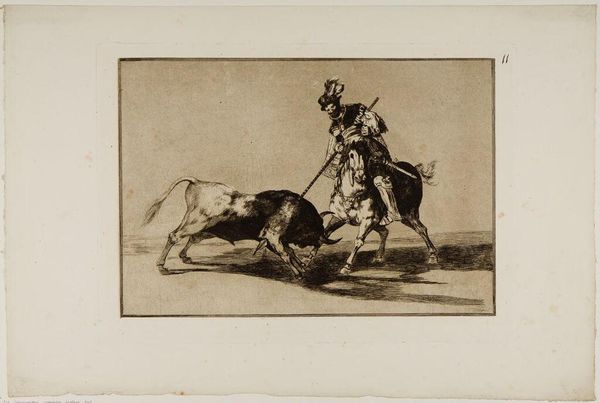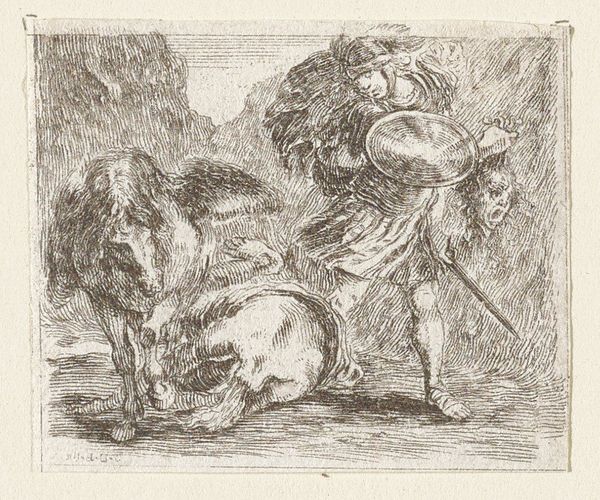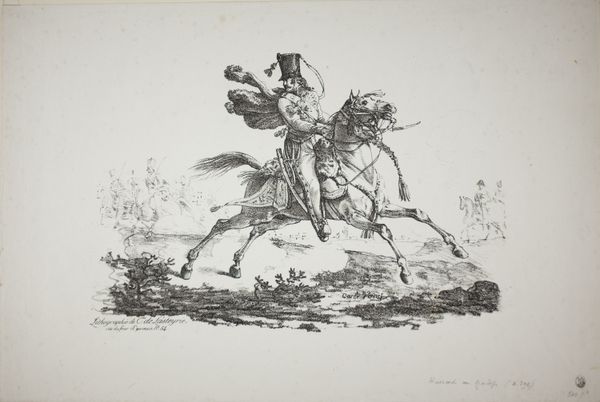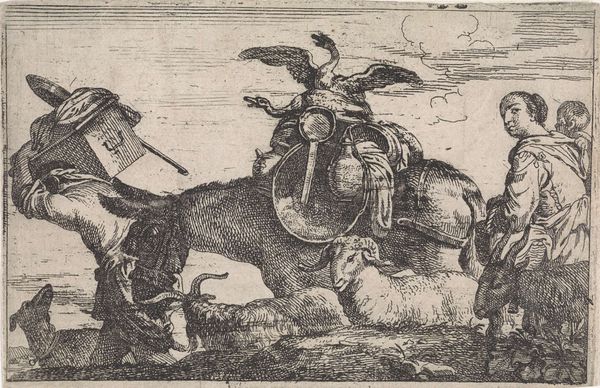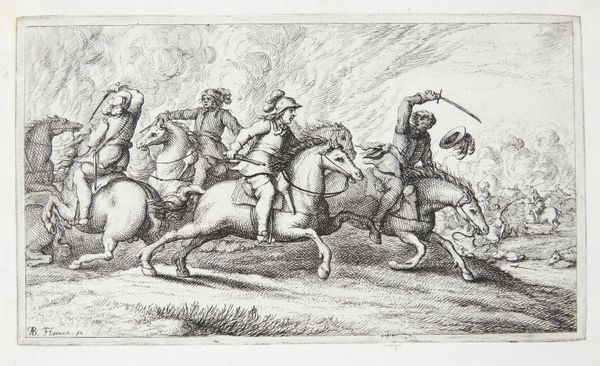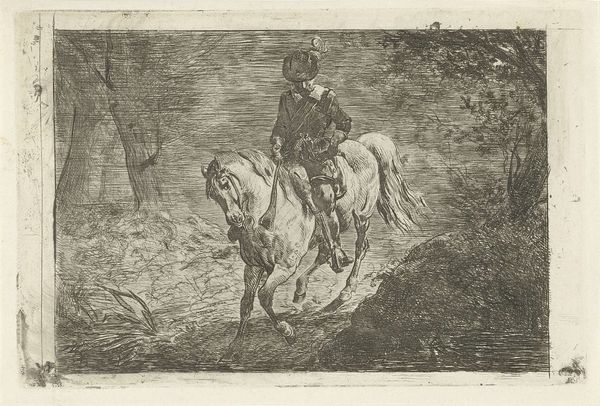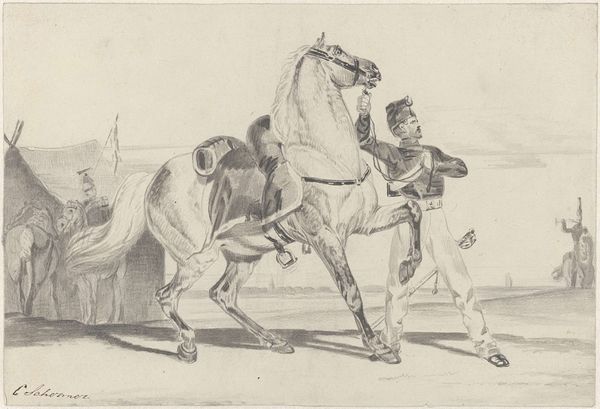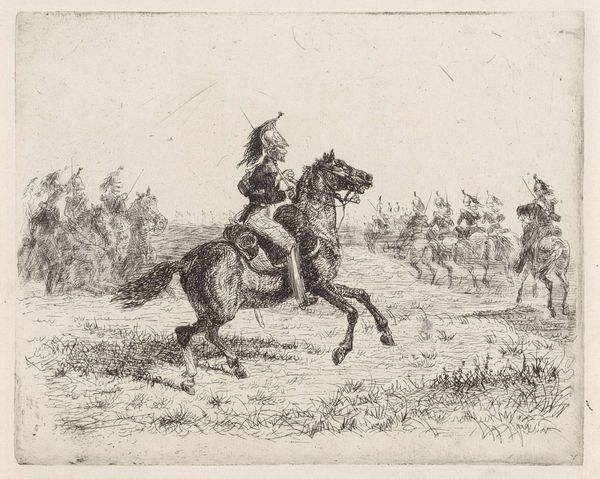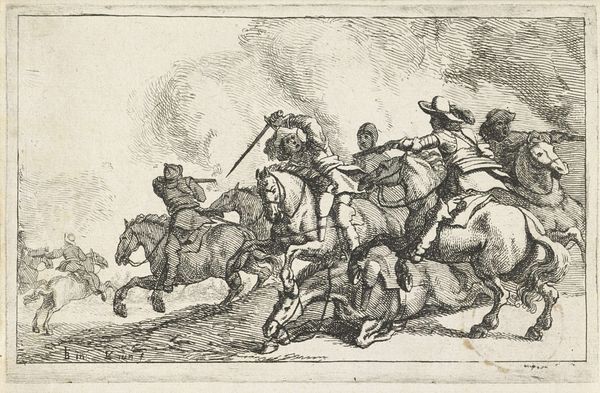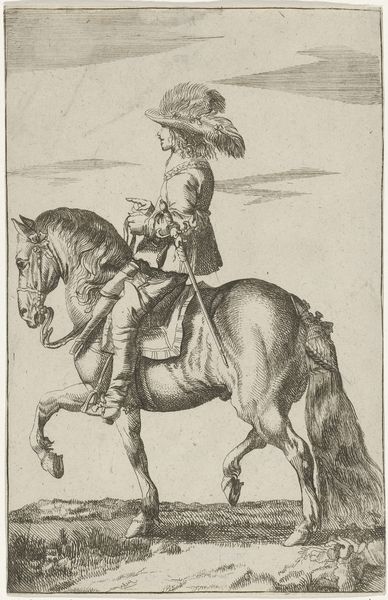
print, etching
#
narrative-art
# print
#
etching
#
charcoal drawing
#
figuration
#
romanticism
#
line
#
portrait drawing
#
genre-painting
#
history-painting
Dimensions: 25 x 35 cm
Copyright: Public domain
Curator: Right, so let's talk about this image from Francisco de Goya's "Tauromaquia" series, dating back to 1816. It's entitled "The Morisco Gazul is the First to Fight Bulls with a Lance," a print rendered through etching. What’s your first impression? Editor: It’s raw, wouldn’t you say? That stark contrast and the frenetic energy... it feels almost…painful to look at. Like witnessing something primal. Is this supposed to be celebratory, because honestly, it looks violent. Curator: Well, it’s Goya exploring the history of bullfighting, focusing on the bravery and skill involved, sure. Gazul, legend has it, was a Moorish bullfighter, which makes the piece resonate with cross-cultural elements from that time. But celebratory is definitely a gloss. I wonder about the gaze in this piece… It’s easy to think of bullfighting as a spectacle, and spectacle comes with a whole lineage of colonial practices. Editor: Colonial practices absolutely. Bullfighting's historical context involves not only class divisions, with aristocrats on horseback initially dominating the sport, but it also touches on deeply entrenched issues of dominance, both human over animal and cultural impositions onto the Iberian Peninsula. You see the elegance, sure. But I also see power structures, don't you think? The pageantry. And then, of course, there's Goya, always willing to disrupt comfortable assumptions, in etching's grayscale harshness. Curator: Harshness is right. What interests me formally is how much movement Goya gets out of what is essentially a static image. The plunging horse, the twisting bull. It almost feels like a snapshot, doesn't it? One moment lifted out of time. Which is odd, because this is presented as historical record. He’s freezing violence, rather than truly narrating it. Editor: And what’s even stranger is the lack of background context. Are we meant to superimpose meaning, based on history, onto this image, given that Goya presents almost a complete absence of place? Look at the figures' bodies in motion. What does this visual tension point to, regarding the relationship between Spain, North Africa, and the spectacle of the bullfight? Curator: Perhaps Goya asks us to bring our own contexts to bear, our own baggage if you will. Ultimately, there's an ambiguousness that transcends time, and makes us still argue about the image centuries later. It is something more complex than bravado; something uncomfortable, and therefore…compelling. Editor: Precisely, its brilliance lies, not just in technical skill, but its resistance to simplistic narratives and… well, it still does speak volumes today, about spectacle, performance, and the complicated interplay of power and culture.
Comments
No comments
Be the first to comment and join the conversation on the ultimate creative platform.
